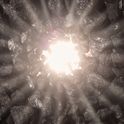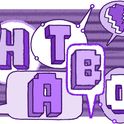This year everyone with their eye on the ball predicted the Nobel prize in physics correctly. It was obvious that it must be awarded to the researchers responsible for the epoch-making detection of gravitational waves (GWs), announced in February 2016—just weeks too late to qualify for last year’s prize.
The discovery was both an experimental confirmation of a prediction of Albert Einstein’s century-old theory of general relativity, which furnishes the current view of what gravity is, and the beginning of a new type of astronomy that uses GWs to look at extreme astrophysical events much as astronomers already use radio waves, light, X-rays and other types of electromagnetic radiation.
Gravitational waves—ripples in spacetime, in the now clichéd argot—big enough to be detected across the galaxy are generated by unimaginably violent processes such as the merging of two black holes. Masses distort spacetime much as sleeping bodies distort the flat surface of a mattress—that distortion, in Einstein’s theory, changes the trajectories of objects in ways that we conventionally describe as the result of the force of gravity. But a ruction like colliding black holes leaves spacetime “ringing,” the ripples spreading through space until they are detected on Earth as a tiny, ephemeral change in the path length of light beams reflected from mirrors along the kilometer-scale arms of GW detectors.
The first detection was made in September 2015 by the Laser Interferometer Gravitational-Wave Observatory (LIGO) experiment, which has two detectors in Washington state and Louisiana. The Nobel is split between LIGO’s prime mover and first director Rainer Weiss, the second director Barry Barish who fought to keep the project from being cancelled in the 1990s, and theoretical physicist Kip Thorne who played a key role in the calculations that let the LIGO team know what they were looking for. These are the natural choices, although they’ll be regarded as symbolic of a team effort. Indeed, the award adds weight to the common charge now that the science Nobels’ restriction to just three recipients is out of step with the way a great deal of science is done today.
I wrote after the announcement of the first detection in February last year that “the detection of GWs is not… the final closing of a chapter in physics. It is the start of a new one.” The GW astronomy that this anticipated is already taking shape. The second event seen by the LIGO team was declared in June 2016: a merging of two black holes rather smaller than those that caused the first one. And as if to seal the deal that we now have a new technique for observing the heavens, just last week another (the fourth confirmed) black-hole merger was reported from both LIGO detectors as well as a European GW project called Virgo, based in Italy. This three-detector event allows the source to be accurately located in space by triangulation.
It also confirms that GW astronomy has arrived: the science can move beyond the mere detection of these astrophysical outbursts and start to examine details of their physics. With further GW detectors in preparation in Japan and India, we may soon be using GWs as routinely as radio waves and X-rays are used today: another window on the universe, showing us things that we can’t see in other ways. Astronomy just turned a corner.
With its Nobel-winning research on gravitational waves, astronomy has turned a corner
We may soon be using GWs as routinely as radio waves and X-rays are used today
October 03, 2017

Benjamin Knispel from the Albert Einstein Institute in Hanover explains the workings of a research satellite used in gravitational wave research. Photo: PA












